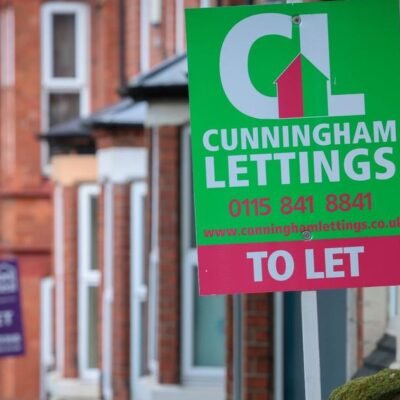Photo by BuyandRent Homes on Unsplash
Opinions expressed by Digital Journal contributors are their own.
Getting your head around mortgage options is always challenging. There are just so many products out there and they’re all a bit different. For the layperson, it’s virtually impossible to figure out which is best.
Tools are getting better at showing those offering the lowest cost. But that doesn’t mean entering the market is easy — far from it. It still requires a lot of time and effort to understand everything that’s going on.
“We’re seeing the complexity of mortgage products growing exponentially,” says Mortgage Quote. “Lenders are targeting new niches and innovating in the products themselves, making it more challenging for the average person to figure out what’s going on. And that’s undoubtedly going to affect people’s personal finances.”
The good news is that once individuals understand the basics of mortgages, comprehending the entire market becomes more straightforward. It still takes a bit of work (as it does with any financial product ecosystem). But once the rudiments are in place, any new products that come along immediately get put into context.
Fixed rate mortgages
Fixed-rate mortgages are the most common and popular among people looking to “lock in” favorable rates for the coming years. These provide security and stability for those leveraging them.
“Fixed rate mortgages are the bread and butter of the market,” Mortgage Quote explains. “These are popular among risk-averse homebuyers who don’t necessarily have predictions on which way the next interest rate decision by the central banks will go. It keeps everything predictable.”
Fixed-rate mortgages usually have a “term.” This period is the one over which the constant rate applies. After that, there’s a renegotiation based on the new interest rate regime, whatever that happens to be.
Fixed-rate mortgages can usually last anywhere from 3 to 5 years. However, you can also lock some products in for seven to ten years, depending on the lender.
There is a cost of course: higher interest rates. And while that might sound counterintuitive, it still makes sense. Homeowners want stability (not necessarily lower prices), while banks need to protect themselves against interest rate rises. If the rate goes up, they want some ceiling to prevent them from losing money.
“Fixed rate mortgages aren’t always the cheapest,” Mortgage Quote reports. “But they are good for most homeowners looking to minimize risk and keep everything predictable, including the payments they make.”
Adjustable-rate mortgages

Adjustable-rate mortgages are another category where the interest rate can go up and down more often. These offer a different set of tradeoffs.
On the one hand, the interest cost of these mortgages is lower. That’s because the risk to the bank is lower and the risk to the borrower is higher. If interest rates rise because central banks decide they need to control inflation, it raises living costs.
Many adjustable-rate mortgages also have cheaper initial periods that lower the cost significantly for households using them. These make getting on the property ladder less expensive (though it makes repayment slower also).
“People should remember that there is also the possibility that payments will drop on mortgages if the interest rate drops,” Mortgage Quote says. “This facility simply isn’t available for those on fixed-rate mortgages. They have to stick with their rate for the length of the term or pay costly fees to get out of it. It’s not ideal.”
Ultimately, variable-rate mortgages are best for homeowners who think interest rates are going to go down. This way, they can pay cheap initial prices and then keep mortgage costs lower long-term. If they believe rates will rise again, they can switch to a fixed rate in the future to avoid the hikes.
FHA loans
In the U.S., it’s also possible to get mortgages insured by the Federal Housing Administration. These can help people on low incomes buy a property and live in it long-term.
The main benefit of this scheme is the lower down payment. Buyers only have to put down around 3.5% of the cost of the home, which is considerably less than the usual 20 to 30% most lenders require to protect against negative equity.
There’s also some leniency on credit scores. Even individuals with poor credit can sometimes obtain loans for properties, particularly if they have regular and well-paid work.
There are downsides, though. Users have to pay an insurance premium to protect the bank from potential losses. Plus, there are strict limits on what can be borrowed. The FHA scheme isn’t a tool people can use to game the system.
“FHA loans are a common vehicle for those on lower incomes, but they shouldn’t be a mainstay for individuals with regular income. They’re not a vehicle for building a property portfolio,” says Mortgage Quote.
VA loans

Veterans Administration loans are another mortgage type for people serving in the military (or those leaving). It’s a kind of national or patriotic reward for those serving in the army, navy, and airforce as a way of saying thank you for their services.
As such, they come with numerous benefits. Many don’t require a down payment or private mortgage insurance (the government covers that). The interest rates are also low, making it easier for military personnel to keep a family at home while away on duty.
Naturally, VA loans are best for anyone in the military (or who served previously). The rewards can be significant and make it possible to own a larger and more complete home than would be possible without military membership.
USDA loans
Interestingly, the USDA also offers loans used for property. The U.S. Department of Agriculture mainly targets those in suburban and rural areas, but it can be a good option for anyone who meets the income requirements.
However, you have to be in specific parts of the country. It’s not available universally.
You must also adhere to USDA income limits. These vary from year to year but are a kind of means-testing to get on the program.
So there you have it: how to understand U.S. mortgage options without losing your mind.





